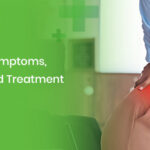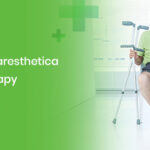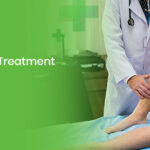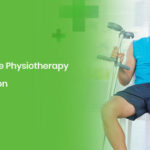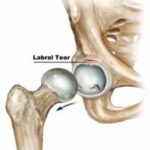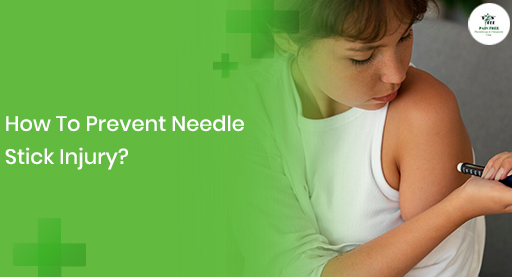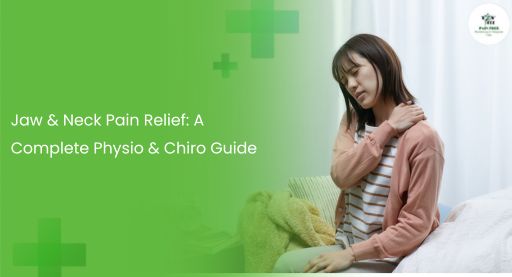How To Prevent Needle Stick Injury?
Needle stick injuries are among the greatest serious hazards that healthcare workers face on a regular schedule, and these dangers are well known. Whether you are a lab worker, nurse, or doctor, you always stand at risk of receiving a needle stick injury. There’s no reason for alarm though! You can reduce your risk of suffering such an injury by being aware of the correct methods, being cautious, and moving effectively.
Why is Needle Stick Injury a Big Deal?
Needle stick injuries, commonly called “sharps injuries,” happen when a needle or similar sharp object punctures the skin, possibly transmitting harmful bloodborne pathogens like HIV, Hepatitis B, and Hepatitis C. Although the transmission risk may be minimal, the effects of acquiring a disease can be significant.
This is why it’s important to regard preventive measures with seriousness. Prevention isn’t merely a good approach – it’s essential to guarantee the safety of healthcare providers, patients, and all others engaged in the care process.
Needlestick and Sharps Injury Prevention Tips
Safety for medical professionals depends on preventing injuries from administering needles and dangerous instruments. Here a few crucial recommendations:
- Make Use of Your Safety Materials: Pick needles that have protection or are retractable.
- Safe Disposal: Always throw off sharps in non-piercing containers.
- Employ protective equipment: Face shields and gloves offer extra safety.
- Do not Recap: Always use secure methods instead of physically recapping needles.
- Continue the training: Maintain your understanding of security measures up to date.
You can lower the likelihood of injuries and encourage a safer healthcare environment by following these simple actions.
How to Prevent Needle Stick Injury: 5 Crucial Tips
Thus, how can we reduce the likelihood of needle stick injuries? By having some knowledge, being attentive, and adhering to set protocols, you can greatly lower the likelihood of facing these injuries. Here are five crucial tips for avoiding needle stick injuries.:
1. Use Needle Safety Devices Whenever Possible
The reduction of needle stick injuries is significantly improved with needle precautions like retracting needles or those with safety shields. After using these tools, you can handle needles without endangering yourself.
In order to avoid unexpected contact, retractable needles automatically retract the needle into a safety mechanism after usage.
After use, needle shields or covers encapsulate the needle to reduce the option of accidental pricks during disposal.
Whenever using any needles, verify that the safety mechanism is operating properly. Then, dispose of any broken needles in the right sharps containers.
2. Be Mindful of Needle Disposal
Incorrect disposal is a major cause of needle stick injuries. Placing a needle in garbage and hoping for it to work is a common experience, let’s confront it. But that isn’t acceptable. To guarantee your own and others’ safety, following these steps for careful disposal:
- Containers for sharps: Always utilize puncture-proof, clearly labeled containers for disposing of needles. These ought to be readily available and clearly labeled
- Avoid overfilling: A sharp container should never be overfilled. When it reaches about three-quarters capacity, it’s time to swap it out for a new one.
- Avoid re-capping: The action of re-capping needles post-use is dangerous and must be steered clear of entirely. If you need to recap, employ a one-handed method and do it carefully.
It may seem straightforward, but correct disposal is one of the most efficient methods to avoid needle stick injury.
3. Wear the Right Protective Gear
That obviously, this is a no-brainer: having protective gear is vital for decreasing your risk of developing a needlestick injury. The safety gear (PPE) you require to decrease your exposure may vary depending on your position. Amongst the most important points include:
- Hands: When working needles or blood-contaminated objects, always use gloves.
- Apply goggles or face shields: that shield your eyes from accidental splashes while working with needles.
- Putting on science coats: or gowns to shield your clothes and skin from contamination.
Updating your equipment is crucial for avoiding injuries. Though it could seem as a final caution, it could save you from a potentially hazardous circumstance.
4. Follow Safe Handling Practices
At times, the most effective method to avoid injury is by using correct technique. Here’s how to manage needles safely:
- Avoid passing needles: Do not transfer a needle straight from one hand to another. Rather, set it on a clean tray or surface and allow the other individual to pick it up.
- Choose the right needle size: Make sure you’re utilizing the suitable needle size for the task. A needle that is either oversized or undersized can result in excessive jabs and holes.
- Keep needles protected until needed: Avoid unnecessary exposure of needles. Keep them protected until they are prepared for use and promptly discard them after use.
Correct technique is essential for preventing these injuries. It might seem overwhelming to recall, but in crucial situations, it can be a game changer.
5. Stay Updated on Safety Training
Medical protocols and safety guidelines progress, and your understanding should adapt accordingly. Consistent training on preventing needle stick injuries is crucial. Here’s the reason:
- Stay updated on new devices: Needle safety devices are consistently advancing. Make sure you know the most recent advancements in needle safety technology.
- Recognize risk factors: Training enables you to pinpoint the times when you’re at greatest risk for needle stick injuries.
- Understand emergency procedures: Knowing the immediate actions to follow in case of a needle stick injury can lower the chances of acquiring a disease.
Keep current with workplace safety training, and ensure you participate in any refresher courses or extra safety sessions available. Prevention isn’t complete after a single lesson, it’s a continual journey.
Frequently Asked Questions (FAQs)
What should I do immediately after a needle stick injury?
The following actions should be taken right away if you sustain a needlestick injury:
- Cleaning the wound Wash the area right away with soap and water.
- Inform others about the problem Notify the safety officer or your supervisor.
- Consult a doctor To find out if any testing or post-exposure prophylaxis (PEP) is required, have a medical examination.
Are needle stick injuries always serious?
Needlestick injuries are dangerous, even if not all of them spread illness, particularly if the needle came into contact with contaminated blood. For this reason, even if the damage appears to be slight, it is important to always follow safety procedures.
Can needle stick injuries be prevented 100%?
Although zero risk cannot be guaranteed, the danger of needle stick injuries is considerably decreased by adhering to the correct safety procedures. Such injuries can be avoided in large part by using appropriate handling techniques, safe disposal, and regular training.
Conclusion: Stay Safe, Stay Smart
Even though needle stick injuries in medical settings are a major worry, they may be avoided with the correct safety measures. You’re proactively reducing the danger by wearing protective gear ,employing needle safety devices, properly disposing of needles, and upholding safe handling procedures. Remember to continue your training to stay current on your expertise.
It’s important to keep in mind that preventing needle stick injuries is about protecting not only yourself but also others at work, patients, and the healthcare system in general. Keep yourself safe and put safety first at all times!
